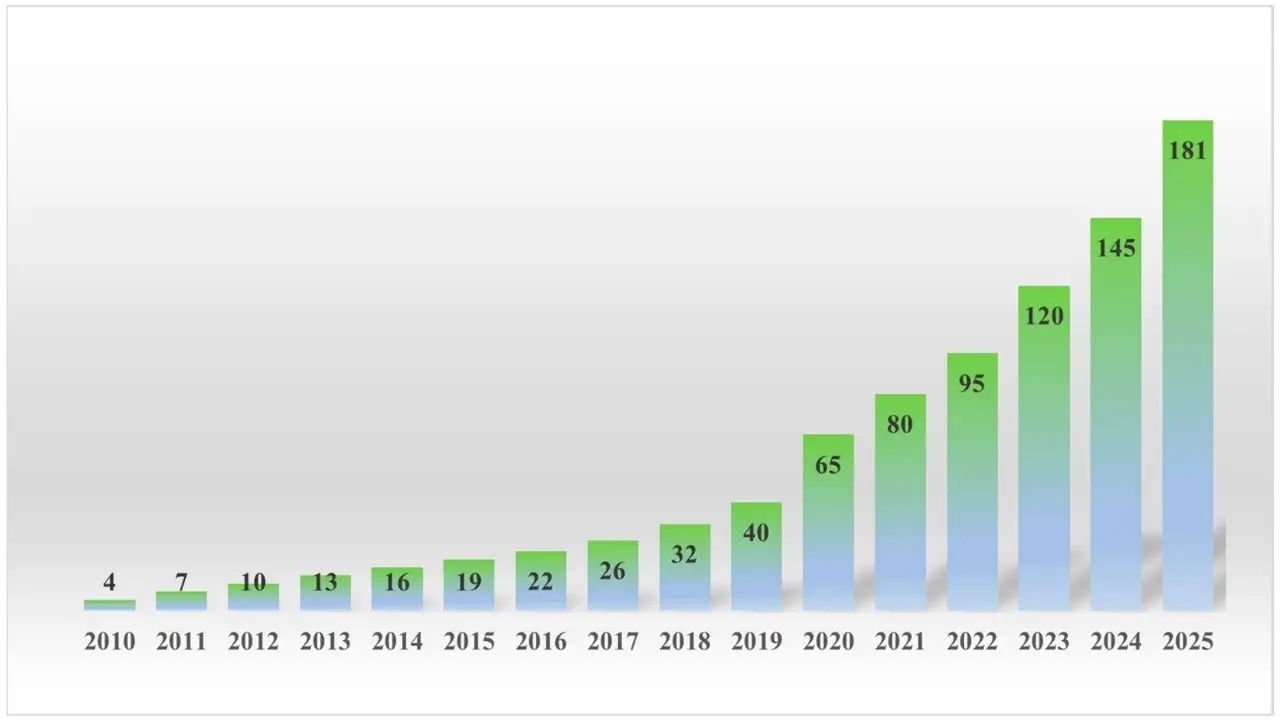In 2025, Logan, a city traditionally known for its modest size, has experienced a surge in growth that has both surprised and intrigued experts. The city’s unexpected economic boom can be traced to several key drivers, including heavy investments in infrastructure, the rise of its tech industry, and a robust local workforce. Understanding the reasons behind this growth provides valuable insight into how smaller cities can thrive in an increasingly competitive global economy.

Logan’s unexpected economic boom in 2025 has positioned the city as a leader among smaller cities in the United States. By combining strategic infrastructure investments, a rapidly expanding tech industry, a skilled workforce, and business-friendly policies, Logan has created an environment ripe for sustained growth. The city’s rise offers valuable lessons for other mid-sized cities looking to foster their own economic development and create vibrant communities for future generations. Logan’s success in 2025 marks just the beginning of what could be a decade of transformation and continued prosperity.
Key Factors Driving Logan’s 2025 Growth
Logan’s recent growth is not just an isolated incident; it is the culmination of years of planning, investment, and the right mix of factors coming together at the right time. While some may have expected this level of expansion only in larger cities, Logan has proven that mid-sized cities can also experience remarkable success. Several key factors are fueling Logan’s growth in 2025, and together they are setting the city on a path for long-term prosperity.
1. Infrastructure Investments: Building for the Future
One of the major drivers of Logan’s growth has been its substantial investments in infrastructure. Over the past few years, the city has committed more than $1.5 billion to enhance its transportation systems, utilities, and housing infrastructure. These investments have played a critical role in attracting new businesses and residents to the area, both of which are contributing to Logan’s economic expansion.
The city has focused on modernizing its public transportation system, with new bus routes, light rail extensions, and expanded commuter rail services aimed at making travel within the city more efficient. Additionally, significant upgrades to major highways and roads have made the city more accessible, which has not only improved quality of life but also attracted businesses that depend on efficient transportation.
Beyond transportation, Logan has also focused on revitalizing its housing market. New residential developments, including affordable housing options and high-end condos, have made the city an attractive place to live. As people flock to the city for work, the demand for housing has surged, providing a boost to the local construction industry and real estate market.
With these improvements, Logan’s infrastructure is becoming a model for other cities of similar size. Investing in infrastructure doesn’t only serve immediate needs but sets the stage for sustained economic growth, helping Logan create an environment conducive to business expansion and population growth.
2. A Booming Tech Sector
Logan’s tech industry has been another key factor driving its economic surge. While the city was once known for its traditional manufacturing and service sectors, the rise of its tech industry has turned Logan into a growing hub for innovation. The city has seen a 30% increase in tech sector employment since 2023, a testament to the city’s ability to attract and nurture technology-based businesses.
Much of this growth can be attributed to Logan’s strategic investments in tech-focused infrastructure and initiatives aimed at supporting startups and established tech companies alike. The city has developed several technology parks and innovation hubs, where companies can access resources, networks, and talent to foster growth. Logan’s efforts to create an ecosystem that supports emerging tech businesses have led to an influx of venture capital and talent from across the country.
Additionally, Logan’s local universities and technical schools have developed programs focused on fields such as software engineering, data science, and artificial intelligence. These programs have created a steady pipeline of skilled workers who are essential to the growth of the tech sector. As the tech industry expands, so does the demand for highly skilled professionals, driving the city’s overall growth in both employment and population.
The increasing number of tech startups in Logan has contributed to the city’s status as a hotbed of innovation. From software development to cutting-edge fields like artificial intelligence and robotics, Logan’s tech sector is becoming known for its diversity and forward-thinking approach. As the tech industry continues to grow, it is expected to play a central role in Logan’s economic future.
3. A Skilled Workforce
The city’s workforce has been another crucial factor in Logan’s success. Over the past decade, Logan has made substantial investments in education and training programs to equip its residents with the skills needed for a modern economy. This investment has paid off, as the city now boasts a highly educated and adaptable workforce, well-suited for the demands of industries such as tech, healthcare, and manufacturing.
Logan’s local universities and technical colleges have played a pivotal role in this transformation. By offering specialized programs in areas like engineering, business administration, and computer science, the city’s educational institutions have helped foster a talent pool that is attractive to employers. Many tech companies and startups have cited Logan’s well-educated workforce as a key factor in their decision to set up shop in the city.
Additionally, Logan’s focus on workforce development extends beyond higher education. The city has partnered with local businesses to offer job training programs, apprenticeships, and workforce development initiatives. These programs have provided individuals with the skills needed to secure good-paying jobs, especially in industries like manufacturing, healthcare, and construction. With an abundance of skilled workers, Logan’s economy has been able to diversify and expand, making it more resilient to external economic pressures.
4. Strategic Government Policies
The local government’s role in shaping Logan’s economic growth cannot be overstated. Over the past few years, city leaders have worked to create policies and incentives that support businesses and encourage entrepreneurship. By reducing bureaucracy, lowering taxes for new businesses, and providing access to capital, Logan’s government has made the city an appealing place for companies to invest and grow.
In addition to financial incentives, the city has prioritized creating an environment where businesses of all sizes can thrive. Logan has introduced policies that support small businesses, such as access to low-interest loans, grants for innovation, and streamlined permitting processes. These measures have helped to level the playing field for startups, enabling them to compete with larger, more established companies.
The city’s strategic focus on creating a business-friendly environment has been complemented by an emphasis on sustainability and responsible growth. Logan has incorporated smart city initiatives into its urban planning, focusing on energy efficiency, waste reduction, and environmentally friendly development practices. These initiatives have not only improved the city’s sustainability but have also helped attract environmentally-conscious businesses and residents.
5. Population Growth and Demographic Shifts
Logan’s population has grown significantly in recent years, with an estimated 15% increase since 2020. This demographic shift has been driven by a combination of factors, including the city’s economic opportunities, quality of life, and affordable housing options.
As more people move to Logan in search of better job prospects, the city has seen a rise in demand for services and amenities. This, in turn, has spurred additional business activity, particularly in sectors like retail, healthcare, and education. With its growing population, Logan is also experiencing an increase in demand for public services such as healthcare and education, which have become key priorities for local leaders.
One of the key drivers of this population growth has been the city’s ability to offer a high quality of life at an affordable cost. Logan offers a unique combination of urban amenities and a small-town feel, which appeals to families, young professionals, and retirees alike. The availability of affordable housing, low crime rates, and access to parks and recreational areas has made Logan an attractive place to live and work.
Can Logan Keep Up with Its Own Growth? The Data Says It’s Complicated
The Future of Logan: Sustainability and Long-Term Growth
As Logan continues to experience rapid growth, the city faces challenges related to infrastructure, housing, and ensuring that growth is sustainable. However, city leaders are committed to managing this growth in a way that preserves Logan’s unique character while meeting the demands of a modern economy. The city’s long-term planning efforts include expanding public transportation, investing in green technologies, and creating more affordable housing options.
Logan’s success story serves as a reminder that cities of all sizes can experience significant growth and prosperity when they focus on key areas like infrastructure, workforce development, and business-friendly policies. As more cities look to replicate Logan’s model, the city’s rise in 2025 may be seen as a blueprint for future growth in smaller metropolitan areas across the country.
While Logan’s growth presents exciting opportunities, it also requires careful management to ensure that the benefits are shared by all residents. If Logan can continue to attract new businesses, develop a skilled workforce, and maintain its commitment to sustainability, it is well-positioned to continue its upward trajectory for years to come.

















